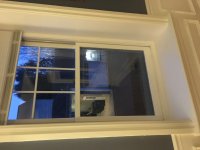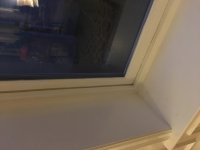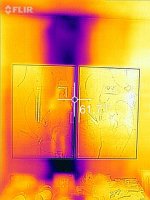[attachimg=3]You guys always have the best advice. Our house has somewhat new windows installed by the previous owners (say early 2000s). Wood, double pane, but not the best quality (they did EVERYTHING cheap). My main problem is I can hear people outside like they are inside the house. It is as if the windows are acting like speakers or something. It's funny, but it is less easy to hear from the outside. I'm thinking a crappy install might be a big part of this. Short of buying new windows I'd like to try something or anything. Here are some pics of a typical window. Stone house so the walls are very deep. Might it be worth taking out the trim and trying something? I have seen acoustic sound proofing caulk like this -https://www.amazon.com/Green-Glue-Noiseproofing-Sealant-Tubes/dp/B005UNESBY Or should I try things form outside? They each have that sort of aluminum cladding/trim.
Any advice appreciated. PS. While I think I am pretty handy, windows intimidate me, though I have no idea why.
Sorry, I have no idea why my pics are sideways here.
Any advice appreciated. PS. While I think I am pretty handy, windows intimidate me, though I have no idea why.
Sorry, I have no idea why my pics are sideways here.



